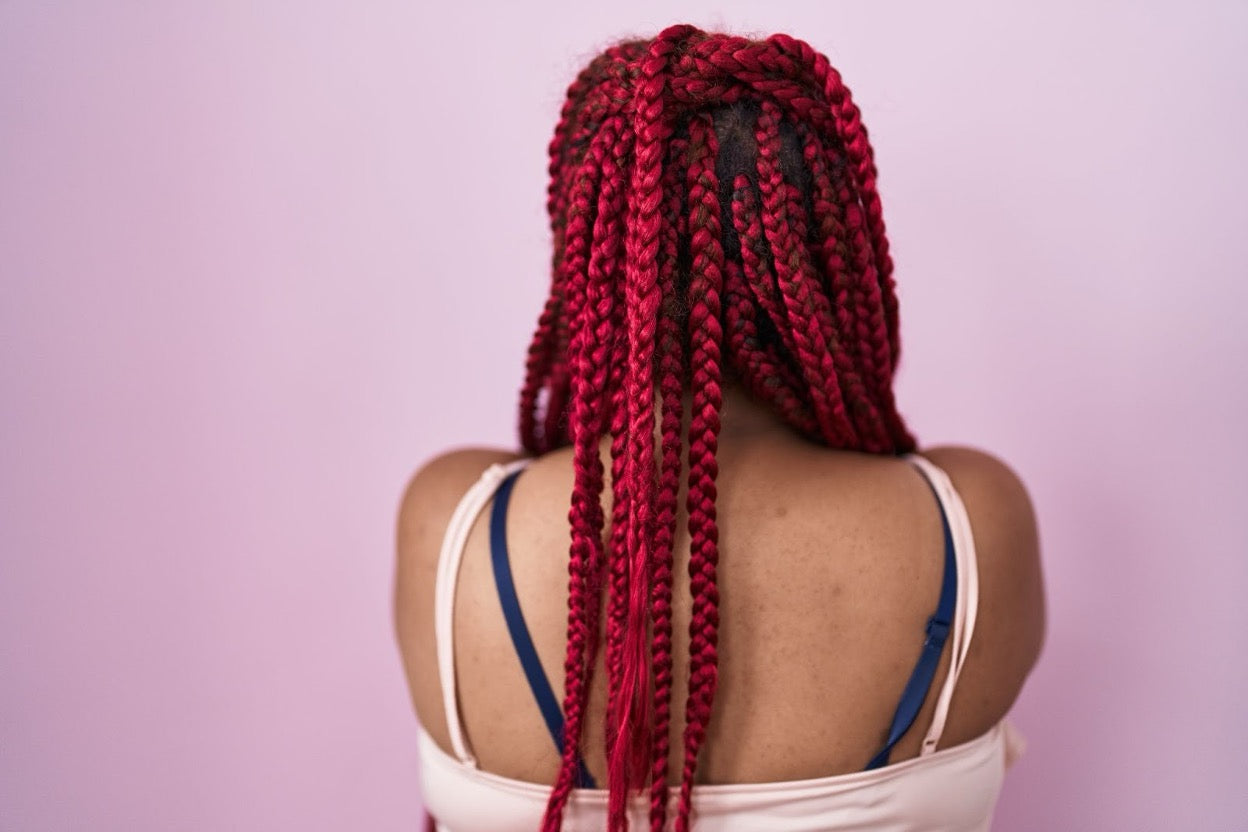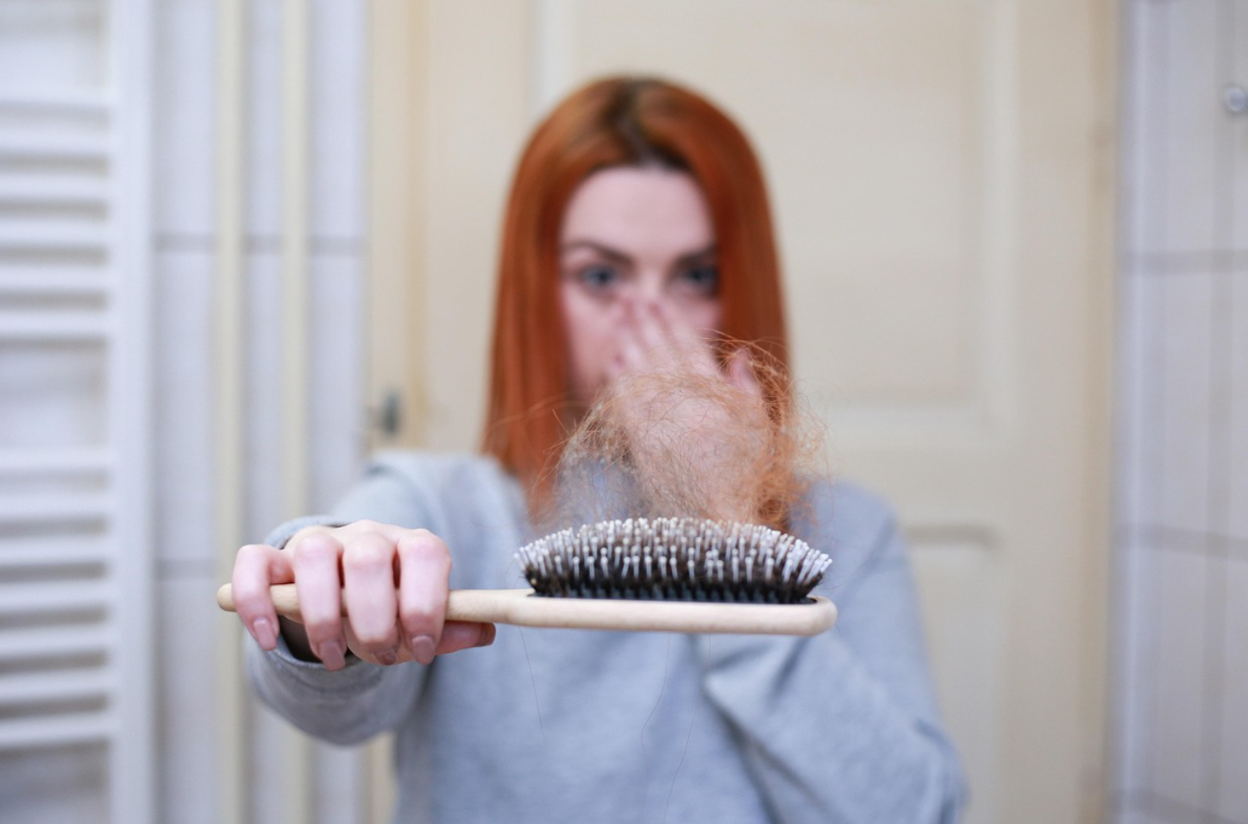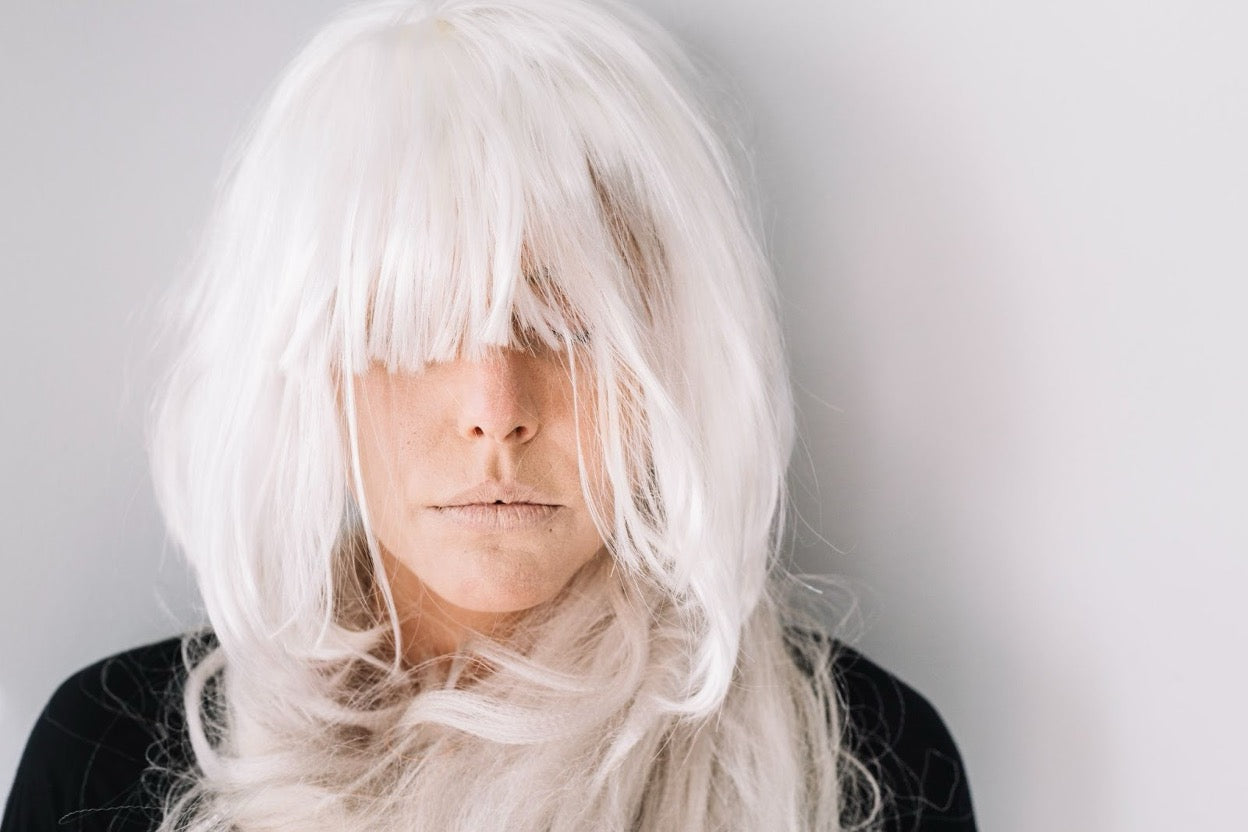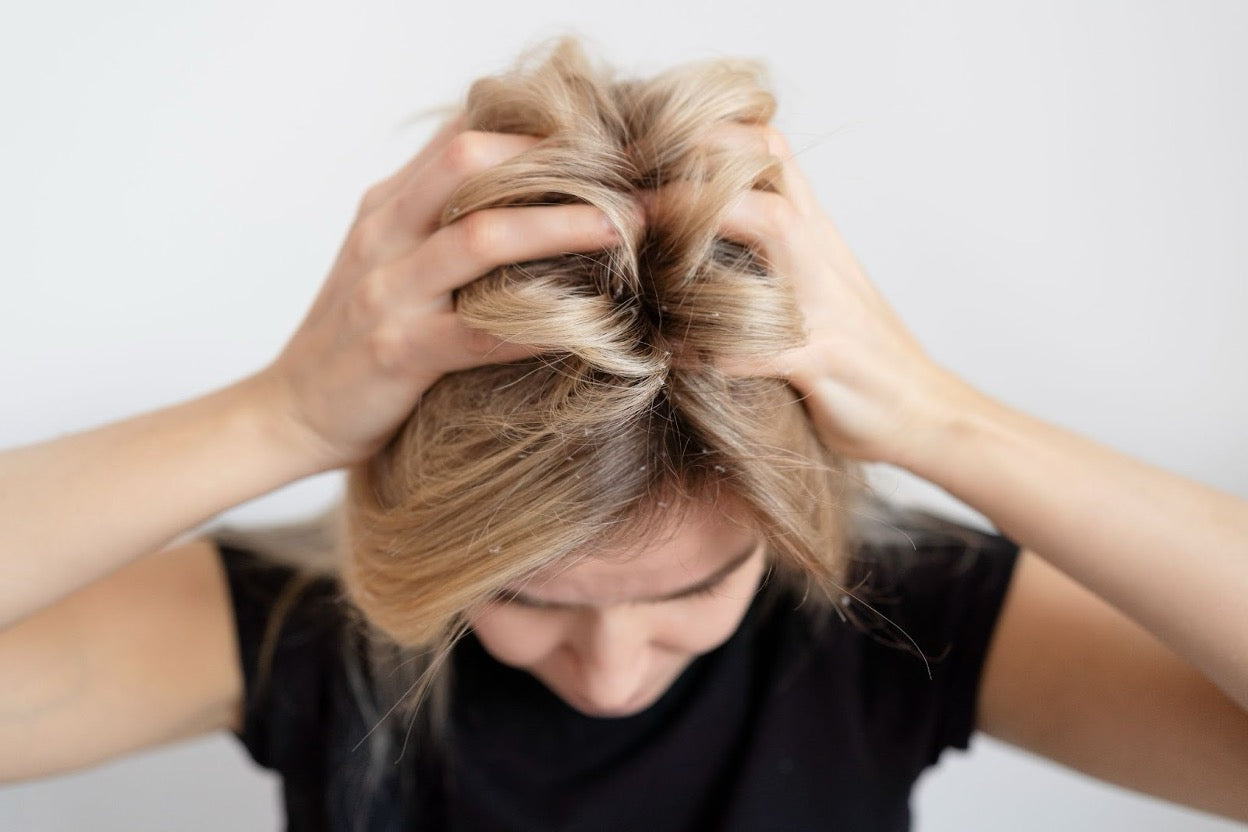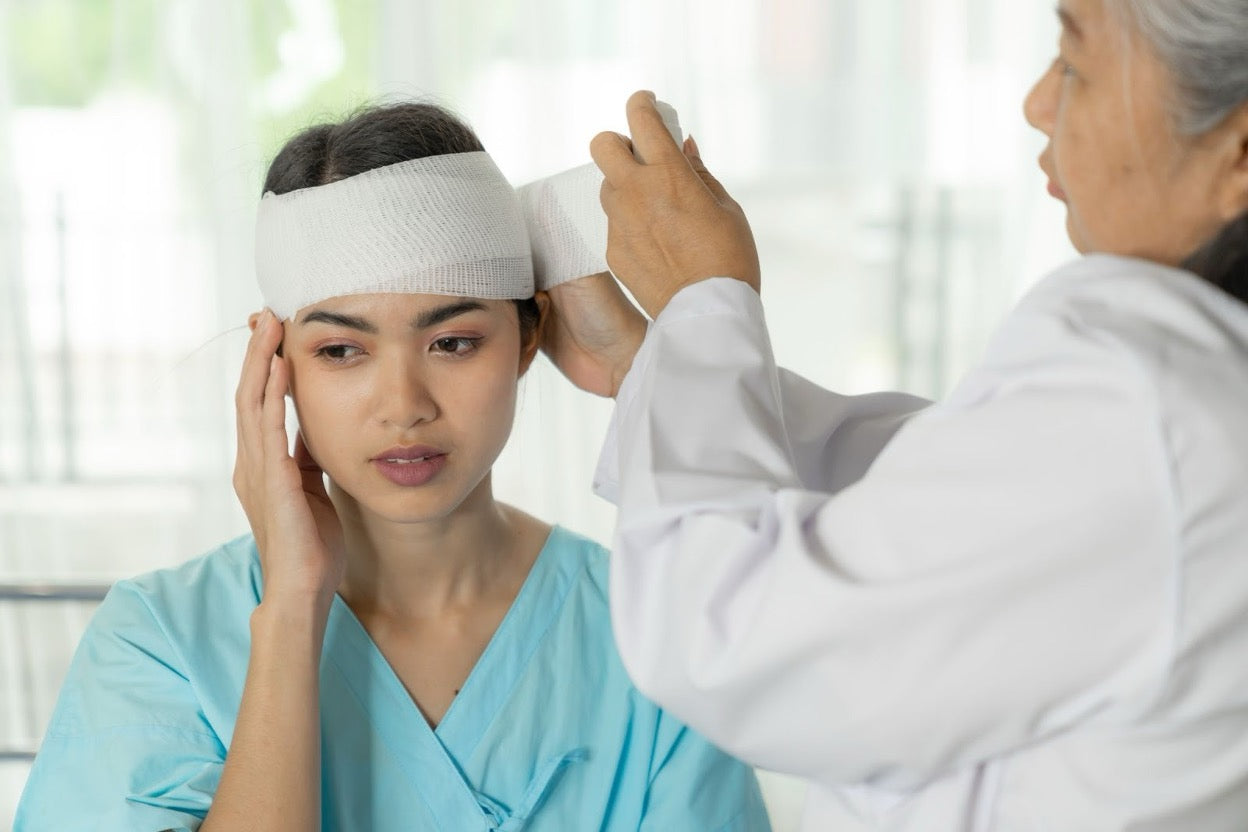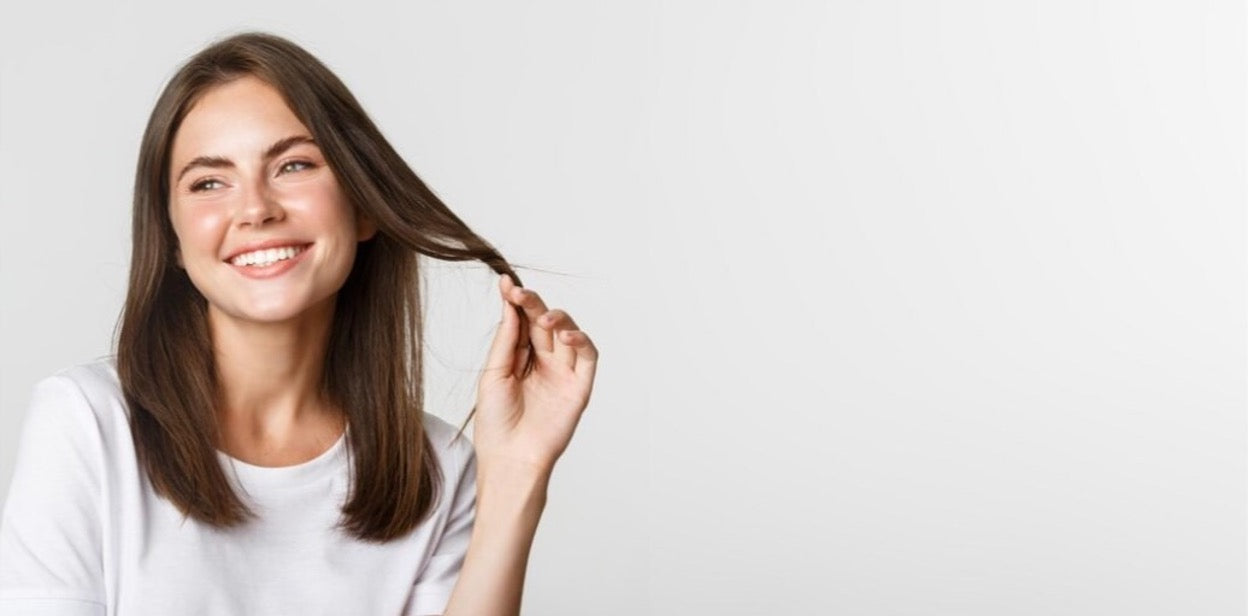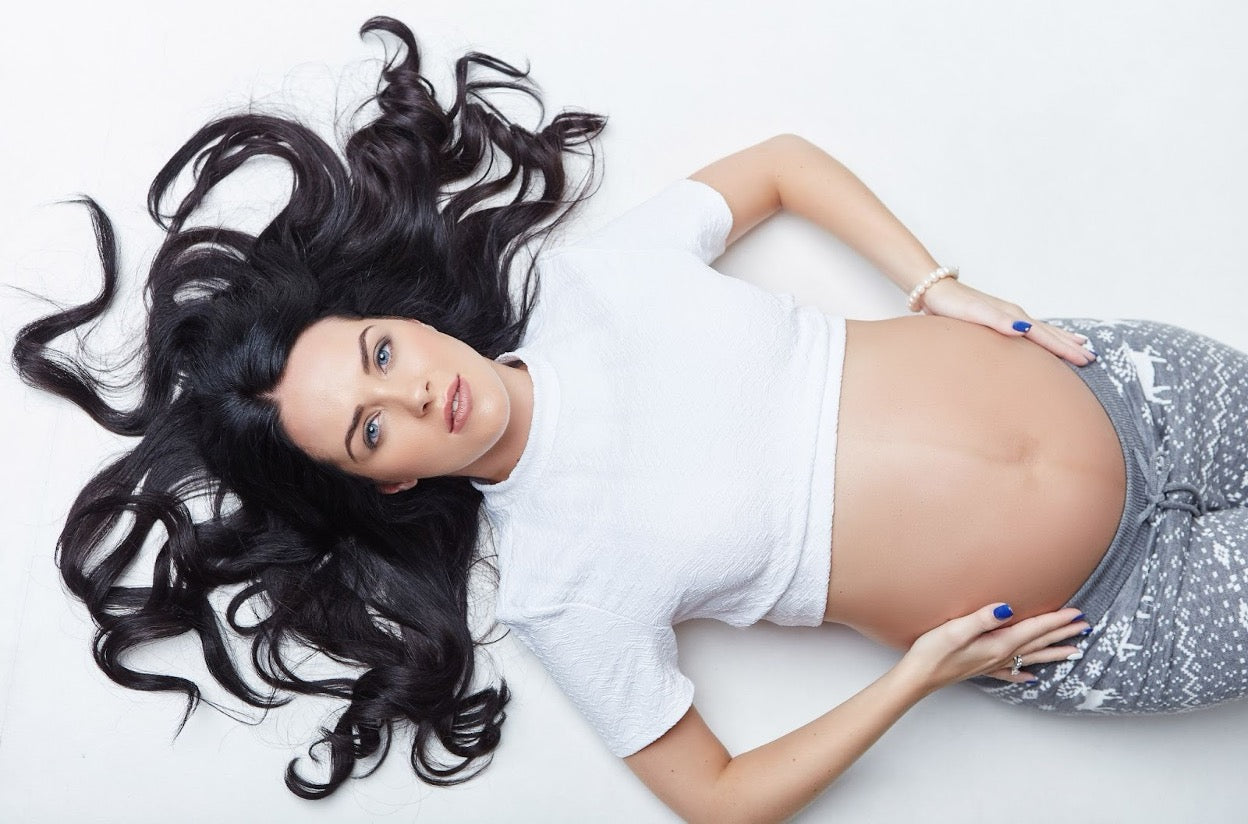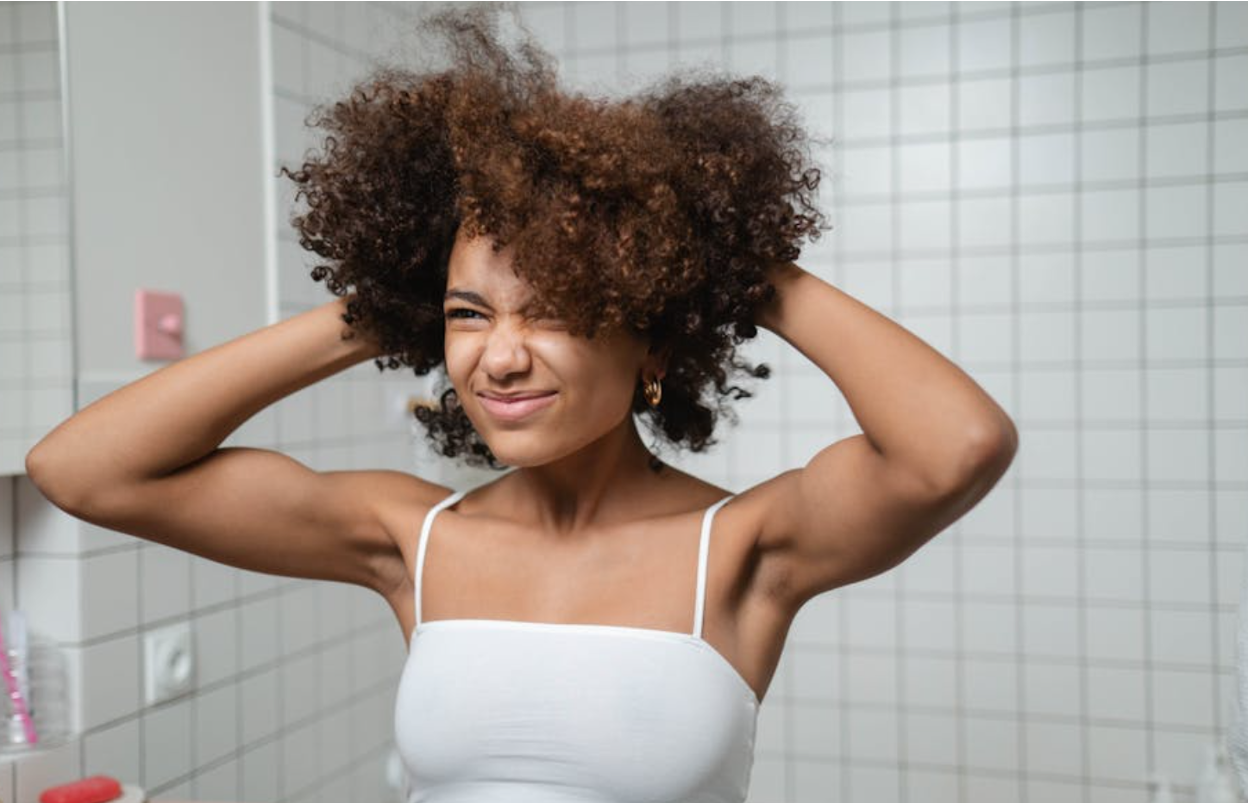Does Your Bleached Hair Need Protein or Moisture?
BY TRYBELLO
Jun 20, 2025

Key Takeaways
- Bleaching significantly disrupts hair's protein structure and strips natural moisture, creating a dual deficiency that requires targeted treatment.
- Signs of protein deficiency in bleached hair include excessive breakage, stretchy strands, and lack of elasticity when wet.
- Moisture-deficient bleached hair appears frizzy, feels rough to the touch, and lacks shine even after conditioning.
- Finding the right balance between protein and moisture treatments is essential, as too much protein causes brittleness, while excessive moisture creates limpness.
- Trybello Hair Helper Spray offers an optimal solution for bleached hair with its balanced formula containing both protein-building ingredients (Rice Ferment Filtrate and Biotin) and moisturizers (Glycerin, Castor Oil, and Argan Oil) to simultaneously strengthen and hydrate damaged strands.
Bleaching Effects on Hair Structure
Bleaching your hair can be a bold and exciting change, but it doesn't come without its challenges. When you bleach your hair, you're essentially stripping it of its natural pigments and oils. This process can leave your hair feeling dry and vulnerable.
Impact on Hair Proteins
The structure of your hair relies heavily on proteins, particularly keratin. Bleaching disrupts these proteins, causing them to break down. As a result, the integrity of your hair strands weakens, making them more susceptible to breakage.
Moisture Loss in Bleached Hair
Besides affecting proteins, bleaching also strips away the natural moisture from your hair. Moisture is crucial for maintaining the softness and flexibility of your hair. Without it, hair can become dry, brittle, and more prone to damage.
“Doctor-Approved Natural Spray Rapidly Boosts Growth & Thickness.
Why 100,000+ Women Are Switching to The TryBello All-Natural Solution!"
Join over 100,000 happy customers who’ve transformed their hair with our natural, doctor-formulated spray—rated 4.8/5 by more than 40,000 real users.
Proven Natural Ingredients
- • Caffeine Extract – Naturally blocks DHT and boosts blood flow to hair follicles
- • Biotin – Absorbs directly through the scalp for maximum results—no pills needed
- • Castor Oil – Soothes inflammation and locks in deep, lasting moisture
- • Rice Water Extract – Packed with proteins and minerals to strengthen hair and reduce shedding
Get Visible Results in 12 Weeks
- • Up to 45% increase in hair thickness
- • Reduces shedding and unclogs hair-draining nightmares
- • Supports regrowth in thinning areas
- • Leaves hair soft, shiny, and full of life
Ironclad 120-Day Growth Guarantee
No results after 4 months? Get 100% of your money back—no questions asked.


★★★★★
I started using this twice a day because I noticed my hairline receding. Didn’t pay attention to track results, now my stylist told me my hair has grown a lot since my last root touch up. I'm impressed! - Bailey

Determining Your Hair's Needs

Before you can effectively treat your bleached hair, assess its specific needs. This involves looking for signs of protein and moisture deficiencies and adjusting your hair care routine accordingly.
Protein Deficiency Signs
Protein deficiency in hair often presents itself in a few distinct ways. If you notice that your hair is breaking more easily than usual or if it feels limp and lifeless, these are strong indicators that your hair may be lacking in protein.
Another sign of protein deficiency is a lack of elasticity. If you gently pull a strand of your hair and it doesn't spring back to its original state, your hair likely needs more protein to restore its strength and elasticity.
Moisture Deficiency Indicators
Moisture deficiency, on the other hand, is usually evident through dryness and frizz. If your hair feels rough to the touch or if you notice an increase in frizz, it's a clear sign that your hair needs more hydration.
Additionally, if your hair lacks shine and appears dull, it may be crying out for moisture. Hydrated hair tends to reflect light better, giving it a natural shine. Addressing these signs with appropriate moisture treatments can help bring back the luster and softness to your hair.
Role of Protein Treatments in Hair Care
How Protein Strengthens Hair

Hair is primarily made of a protein called keratin, which provides structure and strength.
When hair becomes damaged from chemical processing (like bleaching), heat styling, or environmental stressors, the protein bonds within the hair shaft break down. This leads to weakened, porous hair that's prone to breakage and frizz.
Protein treatments work by filling in these damaged areas with supplemental proteins that temporarily bond to the hair shaft. These proteins, typically derived from wheat, silk, collagen, or keratin, are attached to the gaps in your hair's cuticle layer, reinforcing its structure.
Types of Protein Treatments
Here are some common types of protein treatments that vary in intensity and formulation:
- Light Protein Treatments: These are typically in the form of conditioners or serums that you can use regularly. They provide a gentle protein boost and are ideal for maintaining hair health over time.
- Intensive Protein Treatments: These are more potent and are designed to repair severely damaged hair. Often available as deep-conditioning masks or salon treatments, they deliver a concentrated dose of protein to fortify your hair.
- Hydrolyzed Protein Treatments: Hydrolyzed proteins are broken down into smaller molecules, making them easier to penetrate the hair shaft. This type of treatment is effective for strengthening hair from the inside out.
Application Tips for Protein Treatments
Here are some application tips to help you get the most out of your protein treatments:
- Follow the instructions: Each product comes with specific instructions, so it's important to follow them carefully to avoid over-proteinizing your hair.
- Apply to clean hair: Ensure your hair is clean before applying a protein treatment. This allows the treatment to penetrate the hair shaft more effectively.
- Use heat: For intensive treatments, using a heat cap or wrapping your hair in a warm towel can help open the cuticles, allowing the protein to penetrate deeper.
- Rinse thoroughly: After the treatment, rinse your hair thoroughly to remove any residue that could weigh your hair down.
Importance of Moisture for Bleached Hair
Benefits of Moisture in Hair Care

Incorporating moisture into your hair care routine offers numerous benefits.
Firstly, it helps to improve the overall texture of your hair, making it softer and more manageable. This is particularly important for bleached hair, which can become coarse and unruly.
Secondly, moisture helps to seal the cuticles, reducing frizz and enhancing the smoothness of your hair. Finally, moisture helps to prevent split ends and breakage by keeping your hair hydrated and flexible. This is crucial for maintaining the length and health of your hair, especially if you have long or color-treated hair.
Moisturizing Products and Methods
There are various products and methods available to help you maintain moisture in your bleached hair. Here are some popular options:
- Leave-in Conditioners: These provide a lightweight layer of moisture and protection throughout the day.
- Deep Conditioning Masks: These offer intensive hydration and are ideal for use once a week to replenish lost moisture.
- Oils and Serums: Natural serum containing essential oils like argan or coconut oil can help lock in moisture and add shine.
- Co-washing: Washing your hair with conditioner instead of shampoo may even help retain moisture and prevent dryness.
Frequency and Routine for Moisture Treatments
Depending on your hair's needs, you may want to incorporate moisture treatments into your routine as follows:
- Daily: Use a leave-in conditioner or a light moisturizing spray to keep your hair hydrated throughout the day.
- Weekly: Apply a deep conditioning mask or treatment once a week to replenish moisture and restore softness.
- As Needed: If your hair feels particularly dry or brittle, consider adding an extra moisture treatment to your routine.
Restore Your Bleached Hair's Vitality with Trybello's Protein-Moisture Solution
Bleached hair presents a unique challenge, requiring both protein and moisture in careful balance to restore its health and beauty. At Trybello, we've developed our Hair Helper Spray specifically with damaged and bleached hair in mind.

Trybello Hair Helper Spray supports protein-moisture balance by nourishing straight hair with ingredients that both fortify and hydrate.
The Rice Ferment Filtrate in our spray delivers amino acids directly to the hair shaft, filling in microscopic gaps created by the bleaching process. Additionally, our Biotin reinforces these repairs by strengthening your hair from within.
What truly sets our formula apart for bleached hair is the moisture delivery system: our Glycerin creates a moisture-attracting shield around each strand, while our Castor Oil and Argan Oil penetrate deeply without leaving residue, restoring the lipid layer that bleaching strips away.
The addition of Caffeine stimulates microcirculation at the scalp level, ensuring these nutrients reach the hair follicle, where new, healthier growth begins.
For optimal results, apply daily to damp hair with a gentle scalp massage to recover hair strength, shine, and resilience. Watch your hair thrive in just 120 days—plus, you’re backed by a 120-day risk-free trial, so there’s nothing to lose!
Whether you're dealing with freshly bleached hair or trying to repair long-term damage, with consistent care and the right products, your bleached hair can once again look and feel healthy, vibrant, and beautiful.
TRY OUR BELLO HAIR HELPER SPRAY NOW →
Frequently Asked Questions (FAQs)
Trending Topics
See our latests posts #TRYBELLO


